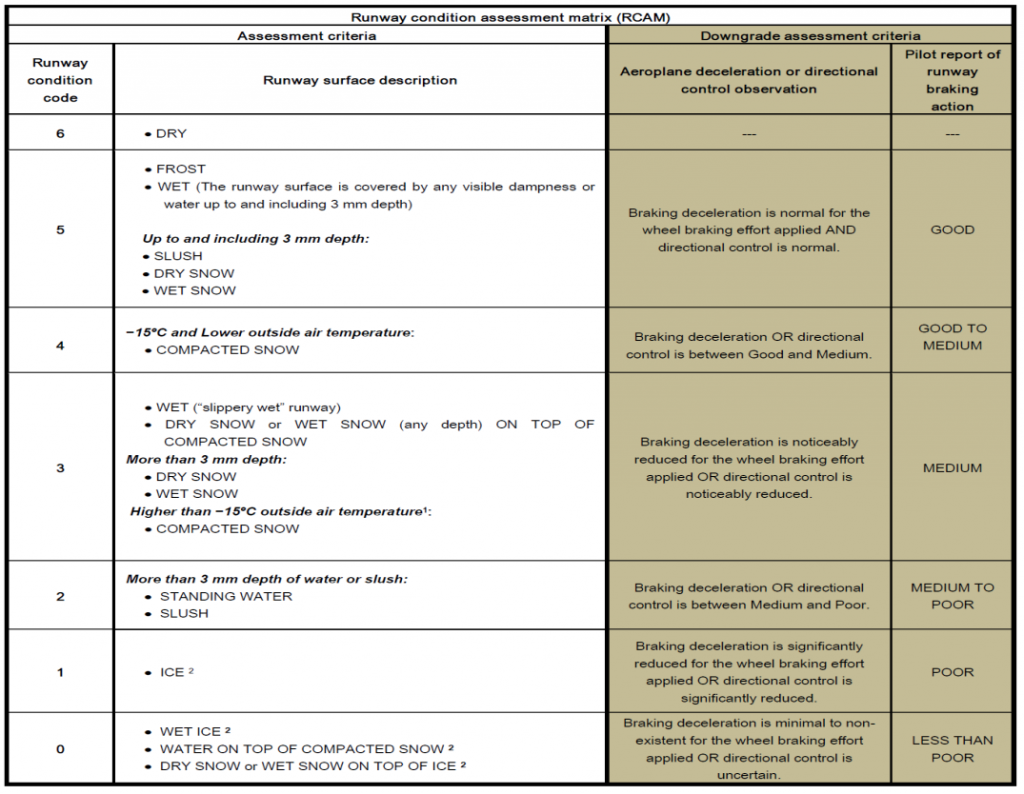Accidents related to slipperiness (runway excursions) is one of the top safety risks of airports all around the world. A majority of runway excursions occur when the runway is contaminated by water, ice, or snow. The International Civil Aviation Organization (ICAO)’s study in 2006 to understand the underlying reasons for this problem resulted into interesting findings: different methodologies being used around the world for information sharing about runways, different communications methods, lack of harmonization in reporting, different training and even a lack of training!
In order to harmonize the information sharing method and thus mitigate the safety risks related to runways, in 2016, ICAO adopted a new assessment method and reporting format for runway surface conditions. This so-called “Global Reporting Format” (GRF) must be enforced for worldwide implementation from 4 November 2021.
What is GRF?
GRF is a standardized language reporting format for runways surface conditions around the globe where people in the air-traffic network understand what the numbers mean and how they can interpret them. The report is developed on the basis of a runway condition assessment matrix (RCAM). RCAM has a set of runway conditions and a number that is allocated to each condition. Depending on the weather conditions and contamination of runways, the runway condition code changes. This information is shared with the pilots; the pilots match this information with performance data of the aircraft and then decide whether it is safe to take off or land in or the distance needed to take off or land in, especially in adverse conditions.

Runway Condition Assessment Matrix (RCAM)
Why do we need to be aware of GRF?
GRF changes the runway assessment methods and information sharing globally. With the current methodology of runway condition monitoring, when a runway is contaminated by ice or snow, the runway inspectors need to determine the type, depth, and coverage of these contaminants. However, with GRF, it is expected that runways are also assessed when they are wet. It becomes more important in tropical areas that may not be accustomed to inspecting the runways. In these parts of the world, the runway conditions can change very quickly due to tropical showers. With the use of RCAM, the inspectors in these areas will be able to react quickly to changing conditions.
What do we need to get ready for?
Information sharing on runways’ surface conditions suffer from shortfalls in the accuracy and timeliness of assessment and reporting methods. The main blockages in the existing inspection methodologies are the lack of a standardized method of reporting and lack of actual relation with airplane performance data. GRF as a new runway surface conditions assessment and reporting concept has been adopted by the ICAO to avoid or decrease accidents related to slipperiness. This new method is based on the type and height of contaminants that can decrease the friction amount between aircraft and runways. As a result, the reporting format and SNOWTAM syntax will change which causes the whole reporting chain to be renewed and inspected.
As a result of implementing GRF, the need for precise inspection of runways and developing standard reports will grow in airports all around the globe. Improving the effectiveness and efficiency of runway surface conditions assessment and reporting demand for comprehensive solutions. Training, cooperation between airports, and the use of software solutions designed for making runway inspection could help the airports to report runway conditions following ICAO standards.
To help you prepare, we’ve created a list of things to check before GRF gets enforced. Download your free checklist from here.
